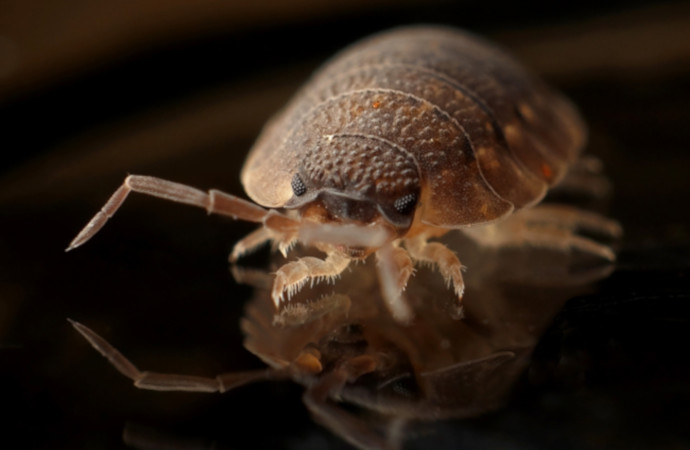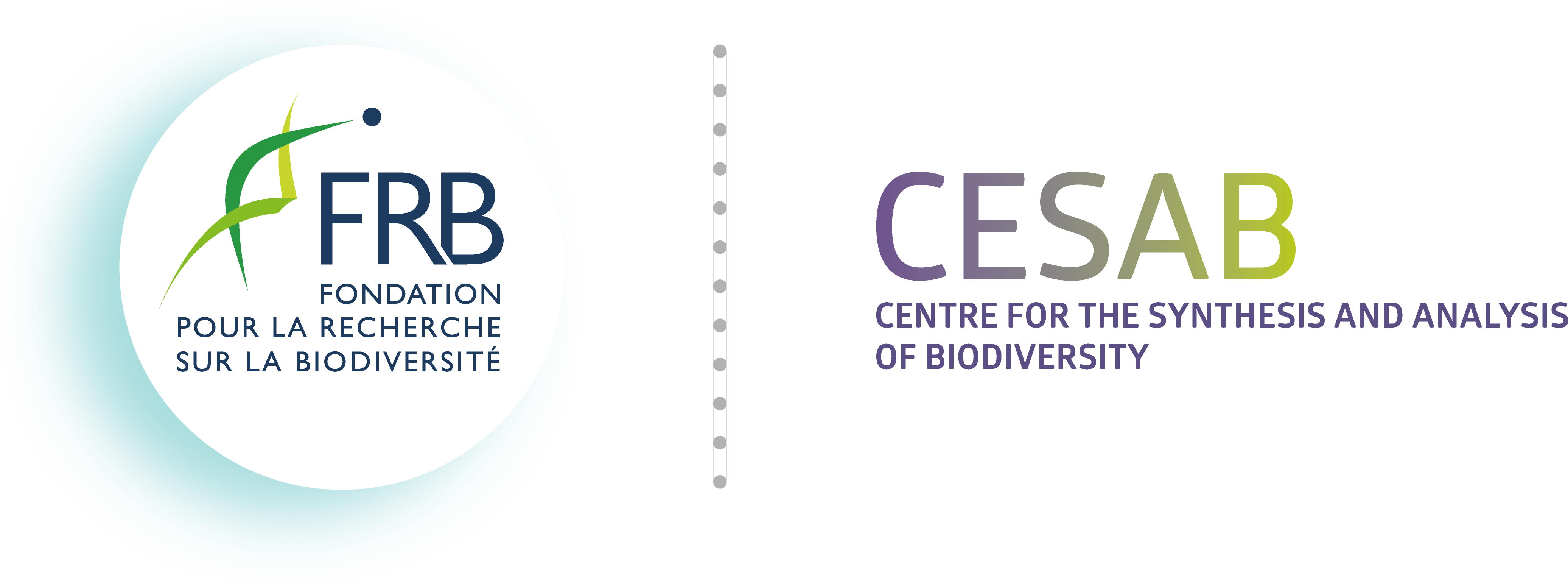BETSI
Biological and ecological functional traits of soil invertebrates to link species assemblages to environmental factors


PI:
Mickaël HEDDE – INRAE Versailles (France)
Postdoc:
Benjamin PEY – ENSAT Toulouse (France)
BETSI brings together experts in macrofauna, collembola, earthworms, biogeography, agriculture and ecoinformatics.
BETSI was selected from the 2010 call for proposals. The project selection process was carried out by a committee of independent experts.
[30] Hedde M, Nahmani J, Séré G, Auclerc A & Cortet J (2019) Early colonisation of constructed technosols by macro-invertebrates. Journal of Soils and Sediments, 19, 3193–3203. DOI: 10.1007/s11368-018-2142-9.
[29] Aubert M & Bureau F (2018) Forest humus forms as a playground for studying aboveground-belowground relationships: Part 1, Theoretical backgrounds. Applied Soil Ecology, 123, 391–397. DOI: 10.1016/j.apsoil.2017.09.004.
[28] Bonfanti J, Hedde M, Joimel S, Krogh PH, Violle C, Nahmani J & Cortet J (2018) Intraspecific body size variability in soil organisms at a European scale: Implications for functional biogeography. Functional Ecology, 32, 2562–2570. DOI: 10.1111/1365-2435.13194.
[27] Brousseau PM, Gravel D & Handa IT (2018) Trait matching and phylogeny as predictors of predator–prey interactions involving ground beetles. Functional Ecology, 32, 192–202. DOI: 10.1111/1365-2435.12943.
[26] Joimel S, Capiaux H, Schwartz C, Hedde M, Lebeau T, Le Guern C, Nahmani J, Pernin C, Salmon S, Santorufo L, Béchet B & Cortet J (2018) Effect of geogenic lead on fungal and collembolan communities in garden topsoil. Pedosphere, 28, 215–226. DOI: 10.1016/S1002-0160(18)60022-0.
[25] Joimel S, Grard B, Auclerc A, Hedde M, Le Doaré N, Salmon S & Chenu C (2018) Are Collembola "flying" onto green roofs? Ecological Engineering, 111, 117–124. DOI: 10.1016/j.ecoleng.2017.12.002.
[24] Vincent Q, Leyval C, Beguiristain T & Auclerc A (2018) Functional structure and composition of Collembola and soil macrofauna communities depend on abiotic parameters in derelict soils. Applied Soil Ecology, 130, 259–270. DOI: 10.1016/j.apsoil.2018.07.002.
[23] Abgrall C, Chauvat M, Langlois E, Hedde M, Mouillot D, Salmon S, Winck B & Forey E (2017) Shifts and linkages of functional diversity between above- and below-ground compartments along a flooding gradient. Functional Ecology, 31, 350–360. DOI: 10.1111/1365-2435.12718.
[22] Maisto G, Milano V & Santorufo L (2017) Relationships among site characteristics, taxonomical structure and functional trait distribution of arthropods in forest, urban and agricultural soils of Southern Italy. Ecological Research, 32, 511–521. DOI: 10.1007/s11284-017-1464-1.
[21] Milano V (2017) Effets de la mosaïque paysagère proche, de l'histoire et des pratiques de gestion locales sur les communautés taxonomiques et fonctionnelles des Collemboles du sol des parcs urbains méditerranéens : les cas de Naples (Italie) et Montpellier (France) [PhD thesis]. Université Paul Valéry, Montpellier, France. URL: https://tel.archives-ouvertes.fr/tel-01863434.
[20] Marliac G, Mazzia C, Pasquet A, Cornic JF, Hedde M & Capowiez Y (2016) Management diversity within organic production influences epigeal spider communities in apple orchards. Agriculture, Ecosystems and Environment, 216, 73–81. DOI: 10.1016/j.agee.2015.09.026.
[19] Pelosi C, Pey B, Caro G, Cluzeau D, Peigné J, Bertrand M & Hedde M (2016) Dynamics of earthworm taxonomic and functional diversity in ploughed and no-tilled cropping systems. Soil and Tillage Research, 156, 25–32. DOI: 10.1016/j.still.2015.07.016.
[18] Decaëns T, Porco D, Cameron EK, Eisenhauer N & Lapied E (2015) Earthworm databases and ecological theory: Synthesis of current initiatives and main research directions. Applied Soil Ecology, 104, 85–90. DOI: 10.1016/j.apsoil.2015.11.012.
[17] Hedde M, Mazzia C, Decaëns T, Nahmani J, Pey B, Thénard J & Capowiez Y (2015) Orchard management influences both functional and taxonomic ground beetle (Coleoptera, Carabidae) diversity in South-East France. Applied Soil Ecology, 88, 26–31. DOI: 10.1016/j.apsoil.2014.11.014.
[16] Joimel S (2015) Biodiversité et caractéristiques physico-chimiques des sols de jardins associatifs urbains français [PhD thesis]. Université de Lorraine, Nancy, France. URL: https://hal.univ-lorraine.fr/tel-01751521.
[15] Mazzia C, Pasquet A, Caro G, Thénard J, Cornic JF, Hedde M & Capowiez Y (2015) The impact of management strategies in apple orchards on the structural and functional diversity of epigeal spiders. Ecotoxicology, 24, 616–625. DOI: 10.1007/s10646-014-1409-1.
[14] Santorufo L, Cortet J, Nahmani J, Pernin C, Salmon S, Pernot A, Morel J-L & Maisto G (2015) Responses of functional and taxonomic collembolan community structure to site management in Mediterranean urban and surrounding areas. European Journal of Soil Biology, 70, 46–57. DOI: 10.1016/j.ejsobi.2015.07.003.
[13] Duflot R, Georges R, Ernoult A, Aviron S & Burel F (2014) Landscape heterogeneity as an ecological filter of species traits. Acta Oecologica, 56, 19–26. DOI: 10.1016/j.actao.2014.01.004.
[12] Henneron L, Bernard L, Hedde M, Pelosi C, Villenave C, Chenu C, Bertrand M, Girardin C & Blanchart E (2014) Fourteen years of evidence for positive effects of conservation agriculture and organic farming on soil life. Agronomy for Sustainable Development, 35, 169–181. DOI: 10.1007/s13593-014-0215-8.
[11] Pelosi C, Pey B, Hedde M, Caro G, Capowiez Y, Guernion M, Peigné J, Piron D, Bertrand M & Cluzeau D (2014) Reducing tillage in cultivated fields increases earthworm functional diversity. Applied Soil Ecology, 83, 79–87. DOI: 10.1016/j.apsoil.2013.10.005.
[10] Pey B, Laporte M-A, Nahmani J, Auclerc A, Capowiez Y, Caro G, Cluzeau D, Cortet J, Decaëns T, Dubs F, Joimel S, Guernion M, Briard C, Grumiaux F, Laporte B, Pasquet A, Pelosi C, Pernin C, Ponge J-F, Salmon S, Santorufo L & Hedde M (2014) A thesaurus for soil invertebrate trait-based approaches. PLoS ONE, 9, e108985. DOI: 10.1371/journal.pone.0108985.
[09] Pey B, Nahmani J, Auclerc A, Capowiez Y, Cluzeau D, Cortet J, Decaëns T, Deharveng L, Dubs F, Joimel S, Briard C, Grumiaux F, Laporte M-A, Pasquet A, Pelosi C, Pernin C, Ponge J-F, Salmon S, Santorufo L & Hedde M (2014) Current use of and future needs for soil invertebrate functional traits in community ecology. Basic and Applied Ecology, 15, 194–206. DOI: 10.1016/j.baae.2014.03.007.
[08] Salmon S, Ponge J-F, Gachet S, Deharveng L, Lefebvre N & Delabrosse F (2014) Linking species, traits and habitat characteristics of Collembola at European scale. Soil Biology and Biochemistry, 75, 73–85. DOI: 10.1016/j.soilbio.2014.04.002.
[07] Santorufo L, Cortet J, Arena C, Goudon R, Rakoto A, Morel J-L & Maisto G (2014) An assessment of the influence of the urban environment on collembolan communities in soils using taxonomy- and trait-based approaches. Applied Soil Ecology, 78, 48–56. DOI: 10.1016/j.apsoil.2014.02.008.
[06] Santorufo L, van Gestel CAM & Maisto G (2014) Sampling season affects conclusions on soil arthropod community structure responses to metal pollution in Mediterranean urban soils. Geoderma, 226–227, 47–53. DOI: 10.1016/j.geoderma.2014.02.001.
[05] Hedde M, van Oort F, Boudon E, Abonnel F & Lamy I (2013) Responses of soil macroinvertebrate communities to Miscanthus cropping in different trace metal contaminated soils. Biomass and Bioenergy, 55, 122–129. DOI: 10.1016/j.biombioe.2013.01.016.
[04] Hedde M, van Oort F, Renouf E, Thénard J & Lamy I (2013) Dynamics of soil fauna after plantation of perennial energy crops on polluted soils. Applied Soil Ecology, 66, 29–39. DOI: 10.1016/j.apsoil.2013.01.012.
[03] Santorufo L (2013) Effects of land use transformation on microarthropod community structure in Mediterranean area [PhD thesis]. Université de Lorraine, Nancy, France. URL: https://hal.univ-lorraine.fr/tel-01749861.
[02] Hedde M, van Oort F & Lamy I (2012) Functional traits of soil invertebrates as indicators for exposure to soil disturbance. Environmental Pollution, 164, 59–65. DOI: 10.1016/j.envpol.2012.01.017.
[01] Pérès G, Vandenbulcke F, Guernion M, Hedde M, Beguiristain T, Douay F, Houot S, Piron D, Richard A, Bispo A, Grand C, Galsomies L & Cluzeau D (2011) Earthworm indicators as tools for soil monitoring, characterization and risk assessment. An example from the national Bioindicator programme (France). Pedobiologia, 54, S77–S87. DOI: 10.1016/j.pedobi.2011.09.015.